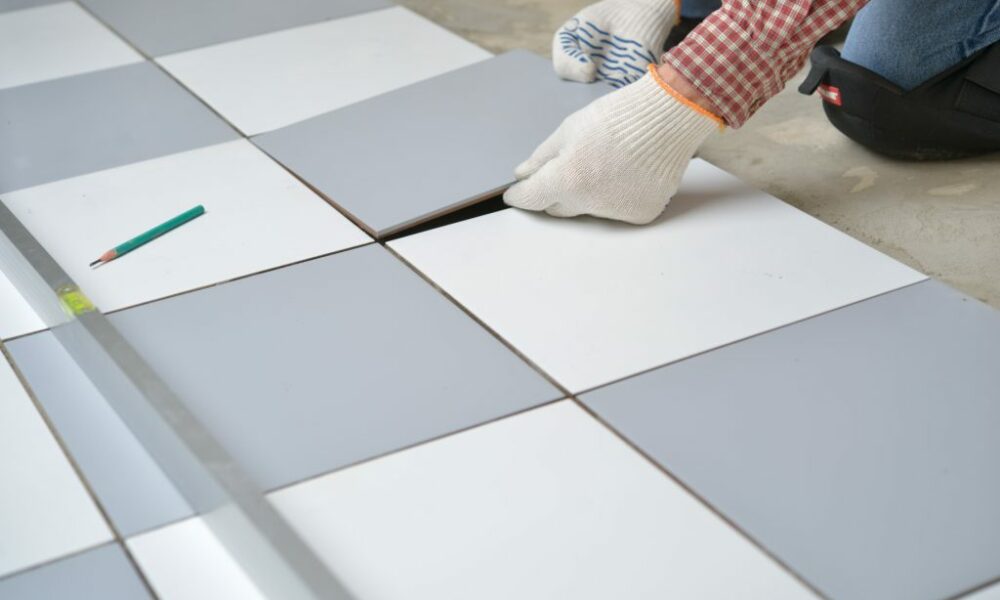The Complete Guide to Tile Installation: Tips and Best Practices

Tile installation is a meticulous process that requires precision, planning, and expertise. Whether you are updating a bathroom, kitchen, or any other part of your home, the right tile installation can elevate the space and ensure durability. This guide offers a comprehensive look at the best practices for tile installation, ensuring a flawless and professional finish.
Preparing for Tile Installation
- Planning and Design
Before starting the installation, it’s essential to have a clear plan and design in place.
- Measure the Area: Accurate measurements are crucial. Measure the length and width of the area to determine the number of tiles needed.
- Layout Planning: Plan the tile layout to minimize cuts and avoid awkward placement. Consider using tile spacers to visualize the final look.
- Choosing the Right Tiles: Select the tiling company Long Island whose tiles suit the space’s function and aesthetic. For instance, porcelain tiles are ideal for high-traffic areas due to their durability.
- Surface Preparation
Preparing the surface is a critical step that affects the longevity and appearance of the tile installation.
- Clean the Surface: Ensure the surface is clean, dry, and free of any debris. Remove any old adhesive, paint, or wallpaper.
- Level the Surface: The surface must be flat and level. Use a leveling compound if necessary to fill in any dips or cracks.
- Prime the Surface: Apply a primer to the surface to enhance adhesion and ensure a strong bond between the tile and the substrate.
Essential Tools and Materials
- Tools
Having the right tools is essential for a successful tile installation.
- Tile Cutter: For cutting tiles to fit around edges and corners.
- Trowel: Used for spreading adhesive evenly.
- Tile Spacers: To maintain consistent gaps between tiles.
- Level: Ensures tiles are laid evenly.
- Rubber Mallet: Helps to gently tap tiles into place.
- Grout Float: For applying grout between tiles.
- Sponge and Bucket: For cleaning excess grout and adhesive.
- Materials
The materials you choose will directly impact the quality of your tile installation.
- Adhesive: Choose the right adhesive based on the tile type and surface. Thinset mortar is commonly used for most tile installations.
- Tiles: Ensure you have enough tiles, including a few extras for cuts and mistakes.
- Grout: Available in various colors, grout fills the gaps between tiles and provides a finished look.
- Sealer: For natural stone tiles, a sealer is necessary to protect against stains and moisture.
Step-by-Step Tile Installation Process
- Laying Out the Tiles
- Dry Fit: Lay out the tiles without adhesive to see how they fit and make any necessary adjustments.
- Center the Layout: Find the center point of the room and start laying tiles from there. This helps in achieving a balanced look.
- Applying the Adhesive
- Mix the Adhesive: Follow the manufacturer’s instructions to mix the adhesive to the correct consistency.
- Spread the Adhesive: Use a trowel to spread a thin, even layer of adhesive over a small section of the surface.
- Comb the Adhesive: Use the notched side of the trowel to comb the adhesive, creating ridges for better tile adhesion.
- Laying the Tiles
- Set the Tiles: Press each tile firmly into the adhesive, twisting slightly to ensure a good bond.
- Use Spacers: Place spacers between tiles to maintain even gaps.
- Check for Level: Use a level to check that tiles are even and adjust as necessary.
- Cutting Tiles
- Measure and Mark: Measure the area where a cut tile is needed and mark the tile accordingly.
- Cut the Tile: Use a tile cutter or wet saw to make precise cuts.
- Smooth Edges: Use a tile file or sandpaper to smooth any rough edges.
- Grouting the Tiles
- Mix the Grout: Mix the grout to the consistency recommended by the manufacturer.
- Apply the Grout: Use a grout float to spread grout over the tiles, pushing it into the gaps.
- Clean Excess Grout: Wipe away excess grout with a damp sponge, being careful not to remove grout from the gaps.
- Buff the Tiles: Once the grout has dried, buff the tiles with a clean cloth to remove any haze.
- Sealing (If Necessary)
- Seal Natural Stone Tiles: Apply a sealer to natural stone tiles to protect against stains and moisture.
- Reapply Sealer: Reapply sealer as recommended to maintain protection.
Common Mistakes to Avoid
- Skipping Surface Preparation
Not properly preparing the surface can lead to tiles not adhering correctly or appearing uneven.
- Incorrect Adhesive Application
Applying too much or too little adhesive can cause tiles to not stick properly or result in uneven surfaces.
- Ignoring Tile Spacing
Failing to use spacers can lead to uneven gaps, making the final look unprofessional.
- Rushing the Grouting Process
Grouting too soon or not cleaning excess grout properly can ruin the finish.
Maintenance Tips for Long-Lasting Tiles
- Regular Cleaning
Keep tiles clean by regularly sweeping and mopping with a mild detergent. Avoid harsh chemicals that can damage the tile surface.
- Sealing
Reseal natural stone tiles periodically to protect against stains and moisture.
- Prompt Repairs
Address any chips, cracks, or loose tiles immediately to prevent further damage.
- Grout Maintenance
Keep grout lines clean and repair any cracked or damaged grout to maintain the integrity of the installation.
Conclusion
Tile installation is a rewarding project that can transform the look and functionality of any space. By following these best practices, you can achieve a professional finish that stands the test of time. Whether you’re a DIY enthusiast or hiring a professional, understanding the steps and avoiding common mistakes will ensure your tiles not only look great but also last for years. With the right preparation, tools, and techniques, your tile installation project can enhance the beauty and value of your home. For high-quality tiles and expert advice, consider Roma Tile of New York to help you achieve the best results for your tiling projects.
Read more from techbullion





